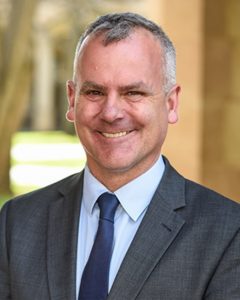 In Week 5, I was lucky enough to attend the Reconciliation Breakfast with members of the Reconciliation Committee. This year’s theme is ‘grounded in truth, walk together in courage’. The Reconciliation website explains that:
In Week 5, I was lucky enough to attend the Reconciliation Breakfast with members of the Reconciliation Committee. This year’s theme is ‘grounded in truth, walk together in courage’. The Reconciliation website explains that:
‘At the heart of reconciliation is the relationship between the broader Australian community and Aboriginal and Torres Strait Islander peoples. To foster positive race relations, our relationship must be grounded in a foundation of truth. Aboriginal and Torres Strait Islander peoples have long called for a comprehensive process of truth-telling about Australia’s colonial history. Our nation’s past is reflected in the present, and will continue to play out in future unless we heal historical wounds.’
I do not subscribe to a ‘black arm-band’ recounting of history but I do recognise the importance of finding out the truth. In my view, without a truthful investigation and acknowledgement of its past, a society simply cannot move forward. Sometimes truthful interrogation of the past can be uncomfortable because notions of who we are as a people can be challenged. Looking honestly at how Aboriginal people have been treated in this country is a case in point. For example, do you know about the 1926 Oombulgurri massacre in which 16 to 20 Aboriginal bodies were found burnt and dismembered? Or were you taught about the 1828 Cape Grim massacre in Tasmania that cost 30 Aboriginal Australians their lives or the 1928 Coniston massacre where police killed up to 170 Aboriginal men in the Northern Territory? If you are like me, the answer is probably ‘no’.
So why is truth seeking and telling important? I believe that as citizens of a democratic country, we have a deep responsibility to be fully informed of our past so that we can make the right choices and decisions for our future. How can we truly reconcile with our Aboriginal brothers and sisters if we do not accurately understand the past? Understanding our shared history, the good and the bad gives us the best chance of moving forward together. Ultimately, acknowledging and accepting the truth will help not only in the formation of good policy, but more importantly, in the ability of Aboriginal and non-Aboriginal Australians to understand and respect each other.
The historical wounds referenced in the reconciliation statement above have not been healed yet and until they are, we will continue to see examples of disconnection, disadvantage and disrespect. I’d like to highlight the disgraceful racist behaviour meted out to Adam Goodes at the close of his career as an example of the legacy of an untruthful telling of history. The critics of Goodes, a number of whom were prominent in the media, tried to whitewash the overt racism by pretending it was linked to Goodes’ propensity to stage for free kicks. If you are in that camp, make sure you watch the film, The Final Quarter, and then come and talk with me if you haven’t changed your mind. The reality was, that white people didn’t like the fact that Goodes called out a young fan for making a racist comment. In doing so, he challenged our notions of what an Indigenous footballer should be. Aboriginal players are there to thrill us with their physical exploits but not to challenge our understanding of who we are. Goodes’ stand was just too damn uncomfortable for many of us to hear.
What does this all mean for us as a School with an Indigenous program? Well, in my view, we’ve done really well at raising awareness and symbolically acknowledging the importance of Aboriginal and Torres Strait Islander people and culture – the excellent Reconciliation Muster last week was a case in point. Perhaps the next step is for us as a community is to embrace some of those more challenging conversations so that we can properly hear what is required of us for our nation to reconcile with its past and move forward.
Pro Deo et Patria.
Ben Hanisch
Deputy Headmaster/Head of Senior School
